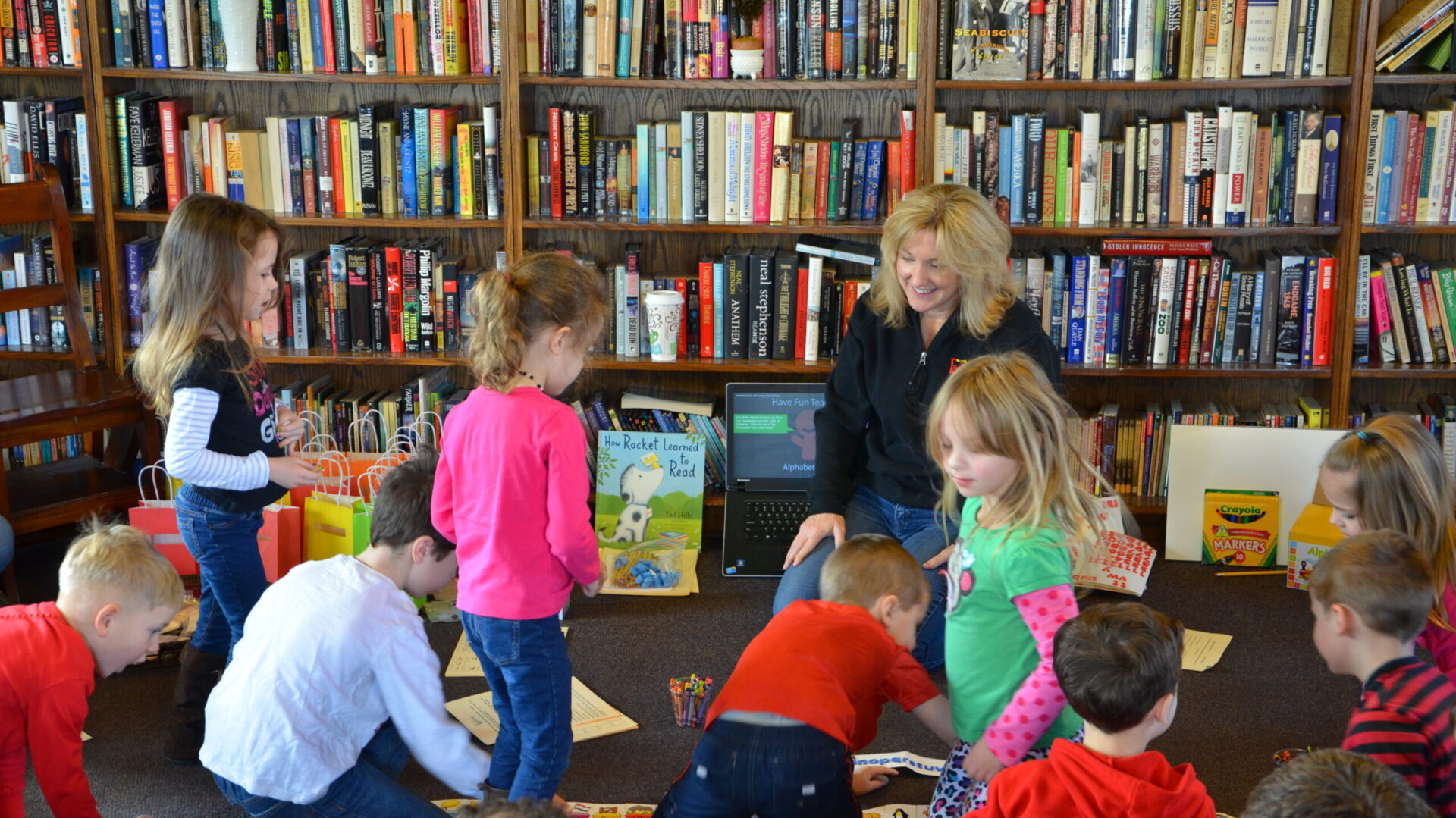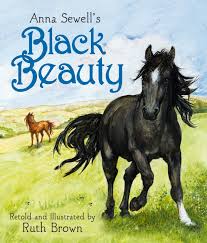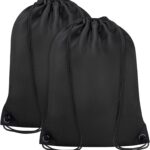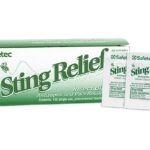
Hello Book Bums families!
This week in the newsletter we are thinking about getting outside and into nature. We share books and poetry about animals and hiking tips for local trails. We also offer a simple way to encourage your child to grow their observational and storytelling skills. Read to the end for Book Bums' summer hours and some amazing images. Enjoy!
Bookbums.com is an Amazon Associate; We earn from qualifying purchases. This means that if you click on a link to Amazon.com and make a purchase, We may earn a small commission at no extra cost to you. We do recommend the products. Feel free to find them by other means.
Word of the Week
posthumous (poss-chew-muss) adjective/describing word - occurring after death
Many artists only achieve posthumous fame, their work valued more after their deaths than when they were alive.
Literary Calendar
- April 28 is the birthday of American author Harper Lee.
- Lee is best known for her classic To Kill a Mockingbird.
- A new collection of her stories will be published posthumously in October. Read all about it in this NPR article.
From our Bookshelves
Not long ago in the newsletter, we mentioned author Anna Sewell who wrote only one book: Black Beauty. Sewell died 147 years ago, today (If you’re reading this on Friday, April 25th.)
Though her book was intended for adult readers—with the hope of improving the treatment of animals—Black Beauty is considered, even today, one of the top ten best-selling children’s novels. I imagine Sewell’s aim was accomplished, for children grow up to be adults who often have animals in their care. I like believing she made the difference she’d intended.
Anna Sewell was in poor health when she wrote Black Beauty. She died only five months after the book was published, however, Sewell did get to see her book become a success.
I have a long history with Black Beauty, for I faithfully carried this book from my school’s library, home, and back again a great number of times. I didn’t read the book, mind you, but I carried it with me because this was the book girls my age were reading; and I wanted to be a reader (or at least to look like a reader).
I don’t believe I ever cracked that book open to discover the story within its pages. I cannot explain why I didn’t read. I mean I could read. I just didn’t.
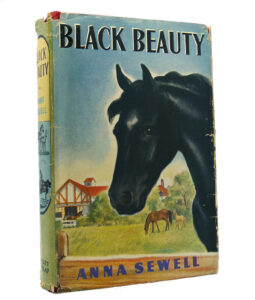
I knew that even though we can’t judge a book by its cover, we can and often do judge a person by the books they’re reading (or even just carrying around).
I knew, even then, the kind of person I wanted to be.
I wonder how my life might have been different if I’d found sooner those books I now hold close to my chest with great affection. Perhaps I wouldn’t have appreciated the gift of reading nearly enough to invest in the work I do today. Perhaps I’d have taken the gift of reading for granted.
Lots of families who come in for assessments with their struggling readers get teary because they so long for their kids to love reading like they did as a child.
I bet that surprises some, for many assume that “parents who read raise kids who read.” That’s simply not true. Parents who read raise kids who love books. That’s true.
Reading to kids doesn’t do the whole job of equipping kids to read on their own though. The skills needed for skilled reading need to be explicitly taught in a systematic way for more than 80% of children. There are some that just get it in an inexplicable way. But most kids need to be systematically equipped to navigate our code-based language. That’s what we do at Book Bums. If you know someone who’s worrying about a child they love, please invite them to email Dr. Christy at [email protected]. We actually have about a dozen openings at this time.
Also, just so you know, today you can listen to Black Beauty for free on Audible or on YouTube. Though there are some scenes including animal abuse and death, this may be a worthy book to read aloud or to listen to on a car ride with older kids, for it provides some equine-specific vocabulary (building kids’ background knowledge), and it’s a book that’s told from a horse’s perspective—which could be highly interesting for kids (promotes an awareness of authors’ decisions). And, because the story is dated, it does not read like standard oral speech. Navigating antiquated themes and language through a read aloud absolutely promotes kids’ ability to navigate more sophisticated texts on their own.
Tips for Raising Readers and Writers
Black Beauty is considered one of the first animal fictional autobiographies. Today there are lots of books for kids told from an animal’s perspective.
Perhaps now that the weather is getting nicer, and lots of animals are out and about all around us, you could encourage your kids to write a story from a pet’s perspective or from the perspective of any animal that can be observed near your home.
Kids should carefully watch their animal of choice, noticing how it moves, what it’s doing, and gathering lots of interesting details about its daily activities. The better the details, the better the story.
Then, the kids will consider a problem the animal might be experiencing.
Next, they’ll consider ways the problem might be solved. Of course, the problem cannot be solved right away. Often, in the stories we love, the character makes multiple attempts to solve a problem.
Finally, the problem will be solved in a way that makes the writer smile. Challenge your kids to recall or find clever endings and apply some of the elements to their own stories.
This should be fun for kids. Your approach to the challenge will make all the difference.
Pause for Poetry
Before Dark
by Wendell Berry
From the porch at dusk I watched
a kingfisher wild in flight
he could only have made for joy.
He came down the river, splashing
against the water’s dimming face
like a skipped rock, passing
on down out of sight. And still
I could hear the splashes
farther and farther away
as it grew darker. He came back
the same way, dusky as his shadow,
sudden beyond the willows.
The splashes went on out of hearing.
It was dark then. Somewhere
the night had accommodated him
—at the place he was headed for
or where, led by his delight,
he came.
Tips for Families

Spring is a great time to go on a hike. There’s no better way to cure the cabin fever we get from being cooped up all winter than to get out and explore nature. Be sure to plan a hike that is friendly to everyone in the group’s skill level.
If you’re in the greater Cincinnati area, I highly recommend visiting Rentschler Forest. It’s located at 5701 Reigart Road, Hamilton, Ohio. You cannot believe what’s hiding off Route 4. It’s tough to find, so use Google Maps or your preferred directions app to get there the first time.
When you arrive, you’ll find shelter houses, a canoe/kayak launch area, and several trails—one (the Cascades Trail) with a cool suspension bridge and creeking areas where your kids can find tiny fish, frogs, and salamanders.
You’ll find multiple playgrounds, and if your kids like bike rides, the Great Miami River Trail passes right through the park. The bathrooms are clean, and there are water fountains too. The park is right on the Miami River, so there are beautiful river views as well.
TEN HIKING TIPS
1. A great website to find trails in your area is AllTrails.com, which allows you to filter by skill level, distance, and accessibility.
2. Bug spray—or whatever is your bug repellent of choice—is highly recommended.
3. Be sure to bring plenty of snacks and water.
4. Kids often like to be in charge of their own supplies, so a light-weight backpack for each hiker might be a good idea. The ones linked here are about $10 per bag, but these are better quality than those that fall apart and dig into shoulders.
5. Be sure to encourage everyone to carry out the trash they carry onto the trail. Reward kids with big smiles and kind, acknowledging words when they tuck trash into their bags.
6. Plan lots of breaks along the way. If kids have cameras, photo breaks can be lots of fun.
7. If there is a creek, add inexpensive water shoes to the kids’ backpacks along with a gallon-size baggie for packing out wet shoes when it’s time to get back on the trail.
8. Give the kids tasks to accomplish along the trail. Click here to download a fun Book Bums Creek Stomping Scavenger Hunt list.
9. Compliment all the things your kids are doing well on the trail. Tell them how far they’ve walked along the way, so they can be proud of their accomplishments.
10. I highly recommend the app called PictureThis for identifying plants. It costs about $40, but we have found it to be such a good investment.
11. Take Sting Relief wipes with you. Tuck them in everyone’s backpacks. It’s about $7 for 150 wipes, and they really do alleviate the pain of a sting—fast! They’re also great for insect bites. I keep them on my front porch, in my Jeep, in our camping gear, and in the medicine cabinet.
12. Take IvyX wipes with you. Even if you’re not sure whether you or your kids are allergic to poison ivy or poison oak, wiping off within an hour after coming off the trail (&/or or within an hour of possible exposure) will help to ensure no harmful oils remain on the skin to cause that indescribable itch irritation. These wipes are a bit pricey, about $20 for a package of 25, but I try to always have these on hand. Remember that ivy oils can remain on fabrics, so tossing hiking gear into the washer right after arriving home is a good idea along with baths and showers for hikers.
13. If anyone gets itchy, use Tecnu Extreme. It is a life saver, I promise you. Use it in place of soap in the shower. Whew. It can be used preventatively or in response to finding some spots of poison ivy.
If the tips haven’t discouraged you, you are my people. Get out there. Let’s hit some great trails! I hope to run into you down the path a bit.
Practical Grammar
Do you ever feel like you need a grammar refresher? In a podcast I shared about using a Dynamic Dictionary when teaching, I mentioned having beginning writers use “mentor sentences” found in books you read aloud, to begin learning about sentence structures. You’ll share that most every sentence has a subject (Who? or What?) and a predicate (What about it?). If either of those parts is missing, the sentence is an incomplete thought. It's a sentence fragment.
What I didn’t share is that, over time, we should identify the of the kinds of words we’re using. Eventually, students will learn that a subject generally includes a noun, a pronoun, or a noun phrase along with any adjectives used to modify or describe the noun while the predicate includes a verb and any adverbs, adjectives, or objects used to modify or describe the action or state of being.
Teaching grammar in this way helps kids to make sense of our language. Providing names for of the kinds of words we’re using helps kids to organize the information we’re teaching.
As you introduce more complex sentences, you’ll address each of the following listed parts of speech.

News from Book Bums
Our summer schedule will begin on Monday, June 2nd. It’s time to begin thinking about whether you’d like to maintain your child’s present tutoring schedule or move to an alternate day/time that better meets your family’s needs. Your child’s tutor will be talking with you about your scheduling needs soon.
Book Bums’ Summer Hours will be:
Monday- 2-7 p.m.
Tuesday- 9-12 & 3-7
Wednesday- 2-7
Thursday- 9-12 & 3-7
Friday- 4-7
Saturday- 8:30-12:00
Tips for Teachers
As I was talking with a tutor the other day, I realized that I need to reinforce an idea with teachers. When kids, especially older students, can easily decode the more basic words on the word cards, game boards, etc. for a particular lesson, you should still quickly make your way through those basic words, for they, too, must become mapped in our students’ memories. Do not do the advanced words only. Do them all. If it’s easy, that’s great! It should only take a few minutes. In just a few minutes, you’re ensuring that your kids will decode words accurately, spell them correctly, and will more readily spot errors so they can flip to an alternate spelling for the same sounds.
When kids spell the word dawn like this: don, they’re absolutely using what they know about how words work. It is only through the process of mapping those words, orthographically, into our memories, that we come to recognize when our spellings are incorrect—they’re not as we’d see them in the books we’re reading.
Decoding words, one to four times, is enough for typical students to recognize their own spelling errors. Remember, for words to be mapped efficiently, our students must make the sounds, recognize the word, and glean meaning from the decoded word.
Just for Fun
Isn’t our world cool? This morning (Friday, 4/25/25), early risers awoke to this:

It’s Venus, Saturn, and our crescent moon making a smile face for us—though you may have had to cock your head to the side a bit.
And then there’s this:
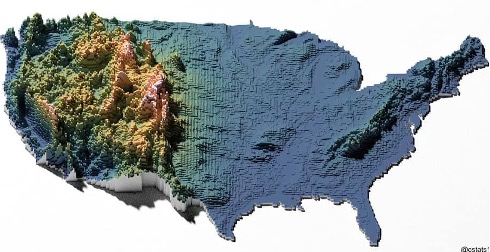
And this:

Aren’t they incredible?
A cartographer is one who makes maps. These maps indicating elevation caught my eye—one recently and the other from long ago.
They reminded me of a fun activity your kids can do.
Invite some young cartographers you love to construct a 3-D map showing the terrain of an island with the likeness of their own faces. Invite them to touch their faces and note as their fingers ascend to the summit of their noses and descend into their eye sockets, that the topography of their faces has highs and lows. The map they make must reflect the changes in elevation with both color and form.
Challenge- Next, create a map of your same face showing the elevation of each landform in a 2-D manner, using nothing but color to indicate elevations.
You may need:
If you know someone who would benefit from our newsletter or tutoring at Book Bums, please share this email with them! Thank you.
Copyright © 2024 Book Bums, All rights reserved
Our mailing address is:
7967 Cincinnati-Dayton Road Suite L
West Chester, OH 45069

